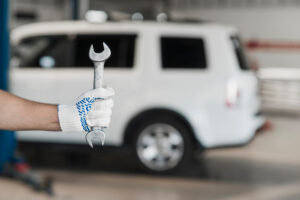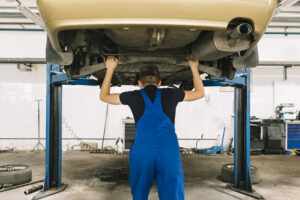You might have an awesome car sitting around the garage and you thought, ‘Why don’t I give this car another life?’ Classic car restoration is a big decision to make as it will entail big costs. It is important to have careful budgeting and planning for this type of project.
In this post, we’ll examine important questions to consider before determining how to restore a vintage vehicle and discuss the main variables affecting restoration expenses.
Essential Questions to Ask Yourself Before Deciding to Restore a Classic Car
Ask yourself these four important questions prior to venturing into your automobile restoration project:
What is my budget for this restoration?
When it comes to repairs, we know that this can be quite costly. That is why a reasonable budget must be set before beginning any restoration work, especially on a vintage vehicle.
Since restoration expenses can rise rapidly, it’s critical to establish clear budgetary limits early on. Also, get to know your suppliers and ask around for the best and reputable shops for the materials that you might need for restoration.
What is the current condition of the car?
You might have a vintage car sitting around for years or you might have one which does not look too worn out.
At this point, you already have a clue as to whether the repair can become more expensive or not. Determining the extent and expense of the restoration requires a thorough evaluation of the vehicle’s current state.
For starters, have a mechanic appraise the value of your repair. You may also opt to do the repair in parts. For example, you can have the internal parts fixed first so that you can restore it to a good running condition, then do the aesthetic repairs later on.
The original condition of the car will have a big impact on the total cost of restoration, regardless of whether it’s a rusted relic or a diamond in the rough.
What is the end goal for the restoration?

It is important to be clear about your goals for the restoration project.
Will you be keeping the car as a family heirloom, selling it, displaying it at car shows, or transferring ownership to the next generation?
Or do you want to simply bring this vintage car back up and running? Determine the purpose and have the car assessed so you can set the budget.
Do I need professional help?
Think about whether you’ll need professional help or if you have the time, resources, and skills to complete the restoration yourself.
Depending on your objectives and level of experience, you must choose between using professional restoration services and doing some DIY work.
Top Factors Influencing Classic Car Restoration Costs
Now that you were able to address the questions, it’s time to proceed with what needs to be factored in the overall restoration costs, which are as follows.
Condition of the Car
The amount of work and materials needed depends on the condition of the car at the beginning of the restoration—whether it has significant rust, mechanical problems, or general wear and tear. An automobile in worse shape will always cost more to restore than one in relatively better shape.
Also, inform the repair shop of how long has your car been sitting, what condition or repairs it underwent previously and some issues you’ve experienced with it before. This is so that the repairs will be accorded to the previous issues encountered.
Model and Make of the Car
Part availability and prices are influenced by the car’s desirability and rarity.
Because there is a large aftermarket support network for certain classic car models, replacement parts are easily obtained and reasonably priced. Others, on the other hand, might need the original parts, which are more costly and difficult to locate.
Extent of Restoration
Choose if a full or partial restoration is your goal. Paint and upholstery are examples of cosmetic improvements; complete mechanical overhauls are not. Every restoration strategy has its own set of expenses and factors to take into account. Determine if your budget is a go for a full overhaul or if you should prioritise the mechanical parts first.
Availability of Replacement Parts
Original components can be costly and hard to find. Find out what parts are available for the particular make and model you own. Occasionally, aftermarket substitutes prove to be more sensible. Some car buyers will determine this factor before making any purchase because this will help inform you whether repairs are feasible in the future or not.
Labour Costs
The cost of labor varies greatly. While DIY projects are less expensive, they do require time, tools, and skill. Expert restoration services guarantee excellence, but they are not free. It is best to choose a reputable shop that has good customer service and ask for an estimate first before starting the repair.
Bottom Line: Set a Realistic Budget

Restoring vintage cars can be a fulfilling project, but it’s important to go into it with an open mind. Make sure your budget is in line with your financial situation and aspirations. Remember that preparation and passion go hand in hand, whether you’re aiming for a showstopper or preserving a family heirloom.
It’s also good to bear in mind that you don’t need to have everything repaired all at once. Take time to prioritise. If you are just wanting to use your car again, the cosmetic aspects can be sacrificed and you can deal with the external repairs later.
GIA Smash Repairs will be able to assist you with expert car restoration and repair that is well within your budget. They will assess the extent of the repair that will be needed for your vintage car and determine the possible repair costs. Contact our friendly team today and cheers to your restoration project!